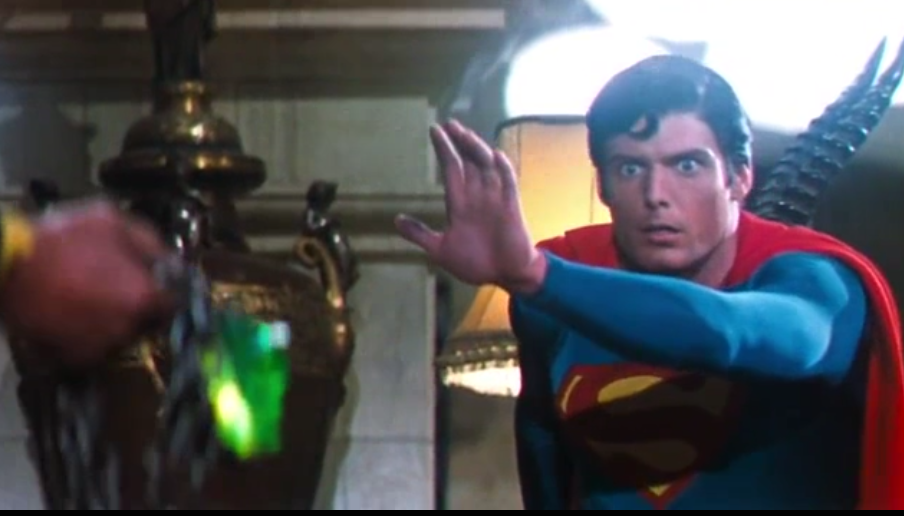Sooner or later, everything old is new again.
We may be at this point in tech, where supposedly revolutionary products are becoming eerily similar to the previous offerings they were supposed to beat.
Take video streaming. In search of better profitability, Netflix, Disney, and other providers have been raising prices. The various bundles are now as annoyingly confusing as cable, and cost basically the same. Somehow, we’re also paying to watch ads. How did that happen?
Amazon Prime Video costs $9 a month and there are no ads. Oh, except when Thursday Night Football is on. Then there are loads of ads. And Amazon is discussing an ad-supported version of the Prime Video service, according to The Wall Street Journal. That won’t be free, I can assure you.
Paramount+ with Showtime costs $12 a month and the live TV part has commercials and a few other shows include “brief promotional interruptions,” according to the company. Translation: ads.
Streaming was supposed to be better and cheaper. I’m not sure that’s the case anymore. This NFL season, like previous years, I will record games on OTA linear TV using a TiVo box from about 2014. I’ll watch hours of action every weekend for free and I’ll watch no ads. Streaming can’t match that.
You can still stream without ads, but the cost of this is getting so high, and the bundling is so complex, that it’s getting as bad as cable — the technology that streaming was supposed to radically improve upon.
The Financial Times recently reported that a basket of the top US streaming services will cost $87 this fall, compared with $73 a year ago. The average cable TV package costs $83 a month, it noted. A 3-mile Uber ride that cost $51.69
A similar shift is happening in ride-hailing. Uber has been on a quest to become profitable, and it achieved that, based on one measure, in the most-recent quarter. Lyft is desperately trying to keep up. How are they doing this? Raising prices is one way.
Wired’s editor at large, Steven Levy, recently took a 2.95-mile Uber ride from downtown New York City to the West Side to meet Uber CEO Dara Khosrowshahi. When asked to estimate the cost of the ride, Khosrowshahi put it at $20. That turned out to be less than half the actual price of $51.69, including a tip for the driver.
“Oh my God. Wow,” the CEO said upon learning the cost.
I recently took a Lyft from Seattle-Tacoma International airport to a home in the city. It cost $66.69 with driver tip. As a test, I ordered a taxi for the return journey. Exact same distance, and the cab was stuck in traffic longer. The cost was $70 with a tip. So basically the same.
And the cab can be ordered with an app now that shows its location, just like Uber and Lyft. So what’s the revolutionary benefit here? The original vision was car sharing where anyone could pick anyone else up. Those disruptive benefits have steadily ebbed away through regulation, disputes with drivers over pay, and the recent push for profitability. Cloud promises are being broken
Finally, there’s the cloud, which promised cheaper and more secure computing for companies. There are massive benefits from flexibility here: You can switch your rented computing power on and off quickly depending on your needs. That’s a real advance.
The other main benefits — price and security — are looking shakier lately.
Salesforce, the leading provider of cloud marketing software, is increasing prices this month. The cost of the Microsoft 365 cloud productivity suite is rising, too, along with some Slack and Adobe cloud offerings, according to CIO magazine.
AWS is going to start charging customers for an IPv4 address, a crucial internet protocol. Even before this decision, AWS costs had become a major issue in corporate board rooms.
As a fast-growing startup, Snap bought into the cloud and decided not to build it’s own infrastructure. In the roughly five years since going public, the company has spent about $3 billion on cloud services from Google and AWS. These costs have been the second-biggest expense at Snap, behind employees.
“While cloud clearly delivers on its promise early on in a company’s journey, the pressure it puts on margins can start to outweigh the benefits, as a company scales and growth slows,” VC firm Andreessen Horowitz wrote in a blog. “There is a growing awareness of the long-term cost implications of cloud.”
Some companies, such as Dropbox, have even repatriated most of their IT workloads from the public cloud, saving millions of dollars, the VC firm noted.
What about security? Last month, Google, the third-largest cloud provider, started a pilot program where thousands of its employees are limited to using work computers that are not connected to the internet, according to CNBC.
The reason: Google is trying to reduce the risk of cyberattacks. If staff have computers disconnected from the internet, hackers can’t compromise these devices and gain access to sensitive user data and software code, CNBC reported.
So, cloud services connected to the internet are great for everyone, except Google? Not a great cloud sales pitch.
Back to pirating 🏴☠️ Arrrr!
Like we ever left the open sea… Ahoy, weigh anchor and keep it steady!
I legitimately did, I stopped pirating except for old obscure stuff that I couldn’t find anywhere.
On a serious note, I stopped pirating games because I have not reason now… but all the streaming services war never gave me at no point a better option than torrent…
Great point. I greatly* prefer the convenience of having my steam library.
On the flip side I pirated most of the old nes/SNES games that are harder to emulate well.
Like we ever left the open sea… Ahoy, weigh anchor and keep it steady!
If you subscribe to all the services, it can be expensive. But it’s still FAR more flexible than traditional cable, since you can pick and choose which services you want on any given month, and cancel when you’ve binged all the shows. The shows that don’t shove ads down your throat every 5 minutes, BTW.
This just reads like an ad for cable companies. “Please stay with the worst customer service in the country, the competition is just as expensive if you ignore how people actually use it!”
deleted by creator
Once it got overly complicated and expensive, the old reliable alternative became viable again.
deleted by creator
What the rest of us are saying is that actively managing subscriptions every month is a PITA headache. And so many people lap it up like that extra homework is totally normal.
It isn’t and it shouldn’t be. My tastes haven’t changed very much in the last 3 years. Hulu’s available content has probably rolled through thousands of titles in that time. I shouldn’t need an extra service just to do a bunch of work to figure out where most of the stuff I like is located. Or which that thing I was watching switched to. It’s asinine and totally pissing in the face of people like me that just want to pay a reasonable price to watch the things I like.
No one’s asking you to do this every month. Every few months or so, when you feel like it. That way it doesn’t feel like homework.
deleted by creator
pay a reasonable price to watch the things I like
lol seriously: how the fuck do you think any of what you typed out is, ‘simple,’?
it’s not ‘simple’ because all of the companies and studios have ALL tried to make their own offerings - so ‘stuff you want to watch’ has been parceled out to 5 different streaming services, genius. can i have some of what you’re smoking or what, pal?
deleted by creator
The issue for me is that coming from pirating as a teen (no way my parents were paying for any digital entertainment), I got used to “choose what I want to watch” first and then finding a solution on how to watch it.
Streaming platforms don’t solve this problem at all, and even when you subscribe to everything some must-watch movies are not on any platforms.
It’s more satisfying to complain about the evil greed of companies rather than acknowledge that perhaps one can manage one’s subscriptions a little more wisely.
Yup, not sure if the OP is a cable astro-turf account or just a useful idiot. Yes, if you subscribe to every streaming service under the sun, you might manage to reach the cost of the average cable subscriber. If you want a real apples to apples comparison through, cable tended to be a lot more expensive, once you had premium channels and made the mistake of wanting that one channel what was only available in their top, hand us your wallet and bend over a barrel tier.
Back before I cut the cord, I was paying ~$200 a month to my local cable company. Why, I wanted HBO, FX and Discovery (before Discovery went to shit). The only way to get that mix was in “fuck your wallet” package and also paying for HBO as an add-on. Fortunately, Discovery went to shit and we realized that we could go OTA and streaming and get everything we wanted for way less.
Sure, prices have creeped up over the years. Netflix is getting really expensive, and we’ve added other services. We’re still well under $100 a month. Also, we can pick and choose what services we subscribe to. We regularly purge services we’re not using and pick them back up when something interesting comes along. This is way, way better than the cable company’s “fuck you, pay us” system.
One difference is that you used to be able to get a cable plus Internet plus phone package for a temporary deal of $99/month for two years. You could threaten to.cancel.and the cable company would offer to extend it or offer a similar deal (say, the same package for $125/month). If you were willing to inconvenience yourself, you could go ahead and cancel.and get another member of the household to get the package as a new customer, bringing it back.down to $99/month (or, if you were a tenant, you could get the new deal.when you moved again).
Now Internet is separated from the entertainment piece, so it’s $110+/month for Internet plus whatever you pay for all of the streaming services plus cell phone (since hardly anyone is paying for a landlines anymore). (Plus VPN or other Internet adjacent spending if so inclined. ) That adds up.to more than the old school cable, Internet and.phone package. I think separating everything out is where people are feeling the pinch.
Ya, if you’re willing to setup a house of cards and you count worst case scenario for the streaming setup, they’re close. Though you still find yourself stuck with whatever service the cable company was willing to give you. At the same time, if you put a bit of effort into the streaming side, the math gets worse again. My internet is $25/month. I have the T-Mobile Home Internet and caught their $25 for life deal. Cell phone is a wash, as I had T-Mo for many years and wouldn’t touch AT&T again with a stolen dick. As for VPN, you only need one if you’re regularly pirating, I don’t do that. Really, there’s nothing to recommend going back to cable. It’s just a bad deal all around.
Cable not offering a la carte services doomed it. But most of the networks just put their IP on a streaming service so it’s the same thing except they still get to milk the boomers.
before i dumped cable, i had an a la carte option. 15 channels (no sports or ‘premiums’) + locals instead of 200+ of junk. “saved” a whole $5-6 a month.
the problem isn’t necessarily the providers’ product offerings… it’s greed… rampant and excessive greed.
A la carte would be more like if you could pick and choose the individual channels, not just select from a few packages.
Your main point is still solid, though.
As a fan of animation, I have to subscribe to a good few services to get what I want. Netflix for Nimona and Castlevania, Max for what’s left of cartoon network (RIP Summer Camp Island), Paramount for nick stuff, Amazon Prime for Vox Machina, Disney for Gravity Falls, and Crunchyroll for anime. (obviously these aren’t an exhaustive list, just some examples of stuff I’ve wanted to watch recently).
And yeah, I could try to juggle all of these by subbing and unsubbing each month, but I don’t want to spend that much effort on something I’m trying to do in my downtime. And even if I did, their selection is still limited to relatively recent stuff and region locked to hell, and as a cherry on top, they might decide to nuke entire series with no way to access them (again, looking at you, Max). And every year they get more strict about password sharing, are more expensive, and include more ads.
So yeah, still not as bad as cable, but it’s been a shitshow in the past 5 years and doesn’t show signs of getting any better.
I mean I certainly get it though. Streaming has gone down hill with more and more studios packing up to launch their own service and take all their content with them. It feels a LOT like cable. The difference is no ads. $80 spread out to all the streaming services they only get your money. $80 for cable they make that plus ads. I think it hurts more cause Netflix keeps raising and the quality doesn’t match. Promising shows don’t get the time. They spend the money on big stars or something?
In my opinion the real problems are that the streaming services are now starting to follow Netflix’s lead and look into cracking down on password sharing. My other issue is it seems it can be arbitrary what gets renewed and idk other services but netflix certainly seems unfair and a horrible way to track when you literally have all the data possible. When something releases they only look at views of the first week or something! And for some reason a really small amount of time watching counts? None of it makes sense to me. What about how many people “add to list” or watch the full preview?
Wouldn’t surprise me if 18month deals are the only way to get under $10 a month soon
I’m in the US. I subscribe around Black Friday (day after our Thanksgiving) for the year. Usually some streaming service has a deal. I currently have Disney+ and Hulu with ads bundled together for $5/mo and Peacock for 99 cents/month for the year, and Starz for $3 for two months (have to remember to cancel soon). Those deals are the only reason why we are subscribed to those.
IIf they offer deals two or.more years in a row, my husband and I take turns subscribing.
With all those options there is still very little to watch.
Last month, Google, the third-largest cloud provider, started a pilot program where thousands of its employees are limited to using work computers that are not connected to the internet, according to CNBC.
That’s not even close to accurate reporting.
They removed internet access from engineers’ build machines, not from peoples’ workstations.
Builds at Google are reproducible and do not require external network access. See Bazel.
Yeah. Build machines should never have had internet access. Any dependencies your product uses should be downloaded once and then cached in your own artifactory. If you don’t, what you deploy in production could be different from what you tested in staging. That can allow attacks like this to happen much more easily.
Uber was unsustainably underpriced in order to gain market share. Pricing is temporary; the core benefit as a consumer was always the ability to request one from anywhere using an app (where you also paid) and have them come directly to you instead of needing to hail one. Taxi companies added that ability and now everything is better. There’s no reason why the approximate cost should vary much, outside of limited promotions. An Uber, a Lyft, and a taxi should cost roughly the same. Why wouldn’t they? Perpetual VC-funded pricing wasn’t what we were promised; the promise was convenient ordering and stress-free payments.
Uber was treated as a tech company by VC and was dramatically overvalued, white it should have been treated as what it is: a taxi company
Exactly that’s why these VC backed startups threw money on free rides and discounts. Blitzscaling to establish market dominance and then hike prices.
start at a loss, ignore annoying legal requirements like worker status and collecting taxes and stuff, build up business, collect vc, sell at a bigger loss, run competitors out of town or buy them out on the cheap. crank up the prices, modify terms and policies, quit handing out free lunch… or sell out or go public and let making a profit be someone else’s problem.
textbook.
Honestly I’m not complaining. This was, functionally, a large transfer of wealth from rich venture capitalists to ~everyone in the form of below-cost rides for several years.
I find these kinds of posts to be so entitled and pessimistic. Yeah, prices have definitely gone up, but the tech solutions are almost unilaterally better than their replacements.
- Streaming: you don’t actually have to subscribe to every single streaming service, and most are dead simple to cancel (good luck canceling your cable service). Most are very lax about sharing passwords, or have cheaper ad-based tiers if you want to save a bit.
- Uber: you can summon a comfortable car that seats up to 6 and can set your destination as well as multiple stops, and have it pull right up to where you are, often in 5 minutes or less, without needing to talk to or hail someone. In the US prices have crept up but in other countries it’s still a bargain compared to taxis, which are sometimes run like a racket.
- Cloud: I don’t even know what this is doing here since we are talking consumer tech and this is more about B2B services. For the consumer the cloud is still dirt cheap and transformative, and doesn’t even have a “back in my day” equivalent.
Everything is amazing and no one is happy.
I’m calling out your streaming counterpoint: in the beginning, there was Netflix. It had almost everything from almost all studios, didn’t care about password sharing, and was easily very affordable, even more so if you split costs between everyone sharing accounts. The best part? No ads. The content kept getting better, the show formats kept getting more accesible.
It was clearly more convenient for everyone to just have Netflix, even more convenient than piracy, but now? Every studio, every company, they all veered away from Netflix and decided to create their own services. Then the price wars started, then the crackdowns on password sharing, and the ad-supported tiers, and then they started canceling shit, good shit, in order to claim them as losses in their tax declarations. And then we all lost, because now we can’t find most content in a single place, we have to endure ads if we want to save money, and we cannot even use some services while traveling since there are limits to devices linked to the accounts. Oh and that show you liked? David Zaslav wanted a bonus this year, so it got shelved even though it was a huge success. It’s no longer convenient to use streaming services, at least not as convenient as it used to be.
You know what’s convenient now? Piracy, through Plex, Jellyfin, and Emby, all with automations, all easily shareable between friends. That’s what I’m doing now, friends chip in when more storage space is needed, or when some additional service is needed. It’s more work for the more tech-oriented of us, but hell if it isn’t fun to just sail the high seas, giving the finger to these companies, while giving friends a good experience.
Best thing about Uber is it relieves the unknown of being just on the meter. I hated having to get a cab and watching that meter tick up and wonder if was going to be 5 or 25 before I got.there. then get feeling was it worth it. Yes you could ask the cabbie for estimate but was not accurate and most of the time you felt locked in at that point anyway
i have an inconsistent internet connection. it’s fine, but i refuse to ruin a movie by trying to stream it. since netflix and others don’t give you a way to pre-download the movie, they can completely suck my balls. 0/10. 🚽🪠
Well, you can pre-download. Sometimes it’s called torrent))
yes this is the way
Many of them do give you a way to pre-download a movie, at least on mobile and windows apps. It’s not every service, or every movie, though.
So for half these things, early on the costs of doing business were carried by other people. Streaming services relied on studios to produce content, and Uber relied on drivers to carry maintenance costs and downtime cost.
Now Netflix is a full studio and all the other services that are competitive have original content. Uber drivers are unionized.
Cloud services are fine for set low computation things, but once you scale past a certain point keeping your own IT staff busy is easy, and they provide a tailor made infrastructure.
All the technology we need for ultimate entertainment is already here. Profits for the “big boys” is the only.piece that they think is missing. The truth is, everything works perfect before you have to inject a way to make money with it.
The ultimate entertainment was always available in each other’s bodies tbh.
You’re on main my guy
Not a guy, and that shouldn’t be news imo.
I’ve ditched both and have gone mostly back to physical media. Even standard 1080p Blu-ray from 2007 look better than any streaming app as the bitrate is significantly higher, and you can find used Blu Ray for super cheap right now. New releases are a little expensive but there are still rental options
I was in the middle of watching Avatar The Last Airbender series for the first time (I somehow missed it all this time, crazy right?) on a Netflix shared accout when they did their dumb lockout.
So I went to The Exchange (gamestop but better) and got that and Legend of Korra on DVD. The special features and commentary are there too, which Netflix doesn’t give you at all.
Also I don’t know who needs to hear this but libraries have all kinds of movies and shows on Blu Ray and DVD that you can take home! It’s one of my favourite things to check out there
You are right! People often forget about libraries, torrents of the past.
Rental is bad unless it’s for free. Or unless you rent to rip.
…and Cable TV didn’t eliminate commercials…and ATMs didn’t reduce banking costs resulting in higher interest on savings…etc…
Interest is set in relation to Fed reserve benchmark rates. Even then most banks will not pay proper interest rate unless you shop for a brokered CD or buy treasuries out right.
This same idea is applied to any pricing… they charge as as much they can for the lowest quality product they can provide while you are still buying. They will only adjust if peasants stop buying. Business 101
Amen
Everything always raises the prices to the amount people will pay for them. It takes time, but nobody will ever leave money on the table.
These are three topics that people love to focus on price against traditional services without looking any deeper.
Streaming is only just as expensive as cable if you subscribe to a bunch of them, but if you pick and choose, start and stop, it is cheaper. Further, it is a better experience. You can watch what you want, when you want. You don’t need an annoying DVR setup, etc. The experience is better, even if you do choose to pay the same.
For Uber and Lyft, I don’t use them because they are cheaper; I use them because they are better than traditional taxis. Seriously, how many people who say they aren’t better than taxis have even used taxis heavily while traveling? Using taxis sucks, except possibly around airports or in the rare city you can walk outside and hail a cab. Outside of that you often have to call in, wait for an extended time with no ETA, etc. Lyft and Uber are a better experience, especially when you are outside major tourist or travel hubs.
Finally, cloud is more expensive, but gets you all sorts of benefits. Those benefits may or may not be worth the cost depending on you or your org, but it is not 1-1 to running on prem. On AWS you can trivially automate events across the entire ecosystem of services, run serverless infrastructure, etc. There are many great use cases for spending the money on the cloud, and most organizations should have a hybrid approach.
Sorry, end rant, but I always get tired of the false equivalence of these three things and the tunnel vision on price.
But what if I like servers? I mean, I don’t today, because Dell not making legacy updates easy on me…but you know, in general!
You do you, you beautiful server hugging butterfly!
Don’t forget plastic money, when we’re promised to use “free” debit cards. There is always a fee, and one way or another we have to pay it. Problem I see is that there is more and more difficult to use cash. All except one cash machines were removed from where I live. The one’s left behind 80% of time doesn’t work. We’re in tech “utopia” trap.
deleted by creator
There is a fee (UK), just you don’t pay it, the shop pays it. That’s what hits the small businesses - they either have to raise the price of the product to cover the cost of the card machine or pay that from their own pocket. Obviously they will not ask customers to cover the difference.
Greed. It’s nothing new.
Technology does not solve problems, it divides them into smaller problems.
Well this is just wrong. You likely wouldn’t exist with technology. Christ the wheel was a technological advancement. Transportation medicine.
The fucking toaster. Any appliances that make life so much better. I disagree a lot.
Washing plates vs a machine that you fill and press a button. C’mon











